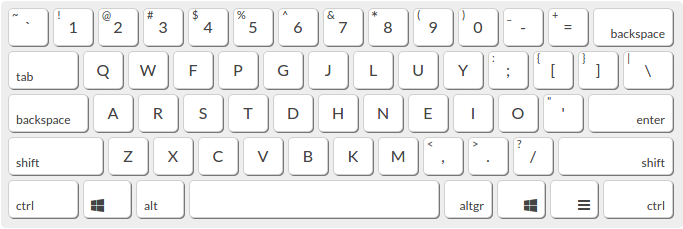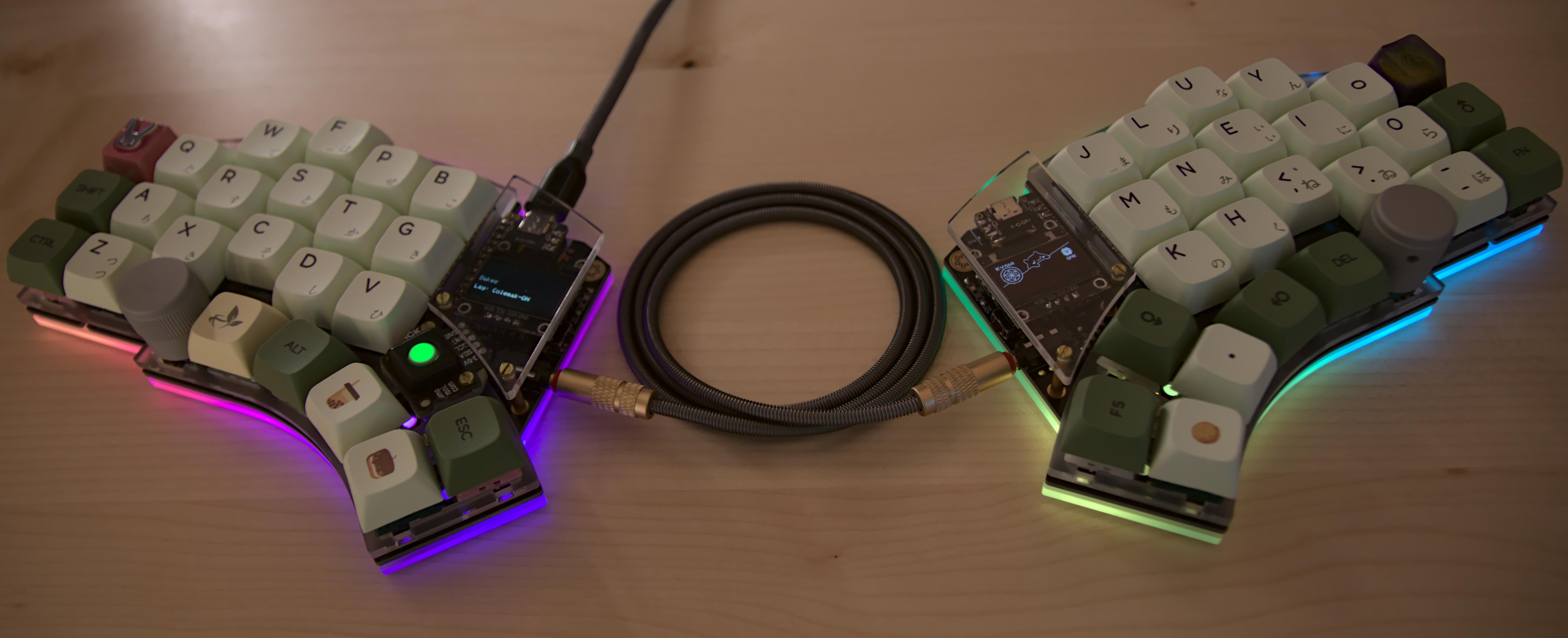If you don’t know about other kinds of keyboard layouts, maybe read this first: Keyboard Layouts
What is Colemak?
In short Colemak is an alternative arrangement of letters on keyboards, where the most commonly used letters are put on the “home row”, where your fingers normally rest.

The problem with learning a new keyboard layout
At first I wanted to the NEO layout and struggled with it for a few weeks/months before I just stuck with QWERTZ for a while.
Eventually I read how many people praised Colemak(-DH), in keyboard specific Discord servers and decided to give it a shot. But here as well I struggled to learn this new layout. After all I would just occasionally try to practice this layout with ktouch, a touch typing learning program. And because I didn’t want it to take Minutes to type even short messages I would just fall back to QWERTZ for normal use.
Which is obviously not beneficial, if you want to learn a new layout for good.
How I learned it with minimal effort
But luckily I randomly found out about “Tarmak”, short for Transitional Colemak. The idea behind it is quite simple. Just change the layout little by little, instead of all at once.
Because when you just swap around about 4 letters at once, it becomes quite easy to remember the positions for those. So even if you don’t have the muscle memory for the swapped letters yet, it won’t kill your typing speed too much, because you can just remember where the right letters are, without looking it up or having to try several times.
I was able to build a decent typing speed again after just 2 days and was back at my usual speed without errors after about 2 weeks. And the same was true for the all Tarmak steps + the transition to the DH mod. So all in all it took me about 2 months to fully learn Colemak-DH, but without me ever being unable to type.
And the great thing about this, even just after a few days with the first tarmak layout, you already start to feel the benefits of colemak and notice how incredibly bonkers the QWERT* layout is. Which just keeps you motivated to push through.

You can read about the details of Tarmak here: https://dreymar.colemak.org/tarmak-intro.html
Or just look at the layouts: https://dreymar.colemak.org/tarmak-steps.html
Apparenly these days there also is a Tarmak-DH: https://dreymar.colemak.org/tarmak-steps.html#tmk-dh
A warning
Before you just jump ahead and use the first tarmak layer be warned: When I said I would be using Tarmak to switch to Colemak, some people told me, it would (or could) break my muscle memory for the pre-existing QWERT* layout.
At that time I already knew it wouldn’t be an issue for me, since I was using the Kyria, a ergonomic split keyboard. And about a year prior, when I learned (touch) typing on this board with QWERT*, I essentially developed new muscle memory. That was because I actually never could touch type on usual keyboards, I always had (and still have) to look down onto them. So I developed two separate muscle memories for QWERT*.
The problem is, in order to learn Colemak with Tarmak, you have to sacrifice your QWERT* muscle memory, because you are not learning a new skill from scratch, you are adapting an existing skill.
Again, this was not a problem for me, because I never intended to ever go back to QWERT* on my kyria, once I learned Colemak. But I can still perfectly fine (or bad) type on “normal” row stagger boards, because my typing there is a completely separate skillset in my brain.
But it actually came, how it was predicted to me: I can’t type QWERT* any more on my kyria. (Which I don’t mind)
So just take this warning and think about, if you want to take the convenient Tarmak shortcut, or put in the hard work to learn new Colemak muscle memory.
And now here is a shot of my keyboard. (Though not quite up to date)
